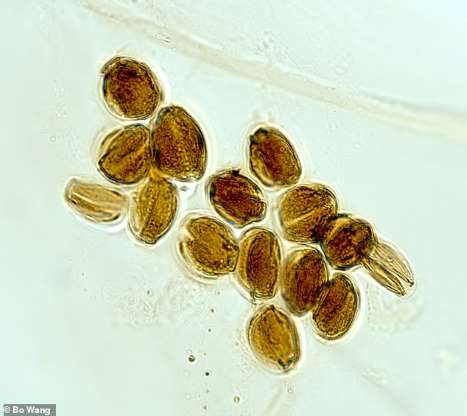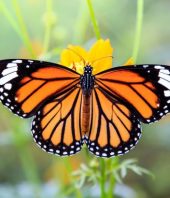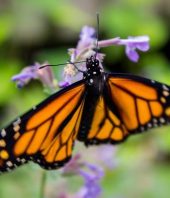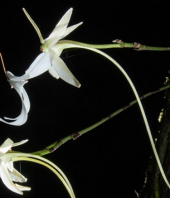The earliest-known example of a pollinating insect has been found preserved in amber dating back to around 99 million years ago, researchers report.
The fossilised tumbling flower beetle was found with pollen still stuck to its legs preserved in amber from deep inside a mine in northern Myanmar's Hukawng Valley.
The find pushes back the earliest-documented instance of insect pollination to around 50 million years earlier than previously thought.
The preserved insect is a newly discovered species of beetle which researchers have named Angimordella burmitina.
'It's exceedingly rare to find a specimen where both the insect and the pollen are preserved in a single fossil,' said paper author and biologist David Dilcher, of Indiana University.
'Aside from the significance as earliest known direct evidence of insect pollination of flowering plants, this specimen perfectly illustrates the cooperative evolution of plants and animals during this time period.'
This, he added, was when 'a true exposition of flowering plants occurred.'
Professor Dilcher and colleagues analysed the 62 pollen grains found with the beetle preserved in the amber — finding that they had evolved specifically to be spread through contact with such insects.
'These [tell-tale] features include the pollen's size, ornamentation and clumping ability,' he explained.
'The grains also likely originated from a flower species in the group eudicots, one of the most common types of flowering plant species.'
'The pollen was not easy to find,' said paper co-author and amber fossil expert Bo Wang, of the Chinese Academy of Sciences.
'The powdery substance was revealed hidden in the insect's body hairs under confocal laser microscopy.'
'The analysis took advantage of the fact that pollen grains glow under fluorescence light, contrasting strongly with the darkness of the insect's shell.'
The insect trapped in the amber is a newly discovered species of beetle, which the study's authors have named 'Angimordella burmitina'.
The team determined that it was a pollinator based on its body shape and having pollen-feeding mouth-parts, which they studied using a microscopic imaging method called X-ray micro-computed tomography.
Prior to this study, the earliest physical evidence for insects pollinating flowering plants came from 50 million years ago, in the so-called Middle Eocene period.
The age of the new fossil was determined by correlation with the ages of other known fossils in the same location from which the fossilised beetle was discovered.
The full findings of the study were published in the journal Proceedings of the National Academy of Sciences.
Source: MSN, Full Article








